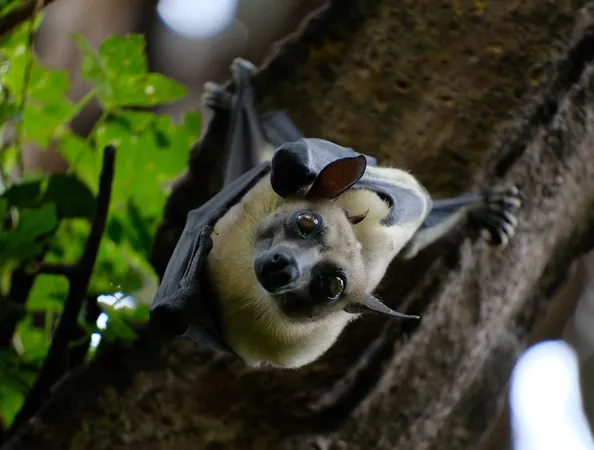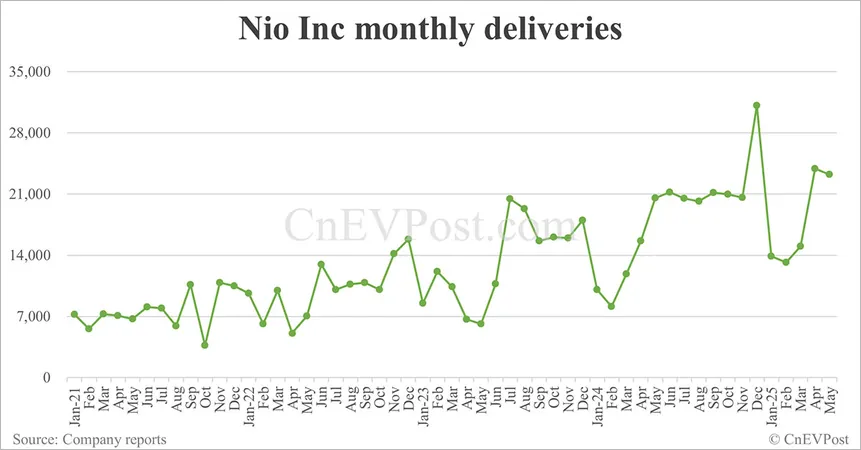
Uncovering the Hidden Hosts of Ebola: A Breakthrough Study!
2025-01-15
Author: Yu
Uncovering the Hidden Hosts of Ebola: A Breakthrough Study!
Bats have long been identified as key players in the transmission of filoviruses, including the deadly Ebola virus. Despite this knowledge, identifying the precise bat species that harbor the virus has remained an elusive challenge. However, a groundbreaking study from the University of California, Davis, and the Albert Einstein College of Medicine has made significant strides in narrowing down potential bat hosts, offering hope for better wildlife surveillance and viral spillover prevention.
Published in the prestigious journal Cell Host & Microbe, the researchers have developed an innovative tool that elucidates the molecular dynamics of how filoviruses attach to their receptors. This understanding is vital as it raises the critical question: where might the next ebolavirus outbreak originate?
Co-leading author Simon Anthony, an associate professor at the UC Davis School of Veterinary Medicine, emphasized the urgency of this research: “If we don’t know what the wildlife host is, we can't predict how, where, or when an outbreak will occur.” This question is particularly pressing in light of the devastating Ebola outbreak in West Africa from 2014 to 2016, which resulted in over 11,000 deaths and countless infections. More recently, another filovirus, the Marburg virus, resurfaced in Rwanda, sparking alarm with 66 reported cases and at least 15 fatalities.
Decoding Viral Entry
This study represents the most exhaustive examination of filovirus receptor binding in bats to date. To infect human cells, the Ebola virus's glycoprotein must successfully bind to a specific receptor on the cell surface. This crucial receptor, known as Niemann-Pick C1 (NPC1), was identified in a landmark discovery by co-leading author Kartik Chandran in 2011.
According to Chandran, “Remarkably, all filoviruses isolated to date require NPC1 as a receptor.” The research team conducted extensive binding assays to analyze how the glycoprotein from various filoviruses interacts with bat NPC1 proteins. By leveraging machine learning, they were able to decode the genetic framework governing this receptor binding.
Focusing on bat species whose NPC1 proteins exhibited a strong affinity for the Ebola glycoprotein, the scientists pinpointed those which inhabit regions known for previous Ebola outbreaks. This dual approach of integrating geographical data with molecular insights is a game changer in the quest to identify potential virus hosts.
A New Approach to Virus Surveillance
This pioneering research not only illuminates the ecological nexus between bats and Ebola but also sets the stage for future surveillance to uncover the reservoirs of various viruses. As new ebolaviruses and genetic variants emerge, this methodology could serve as a vital tool for determining their potential to infect humans.
Gorka Lasso, another co-leading author, remarked, “This study combines two seemingly unrelated pieces of the puzzle—geographic and molecular data—to address the fundamental question of whether these bats can serve as hosts for the virus.” The implications of this work extend beyond filoviruses; it lays the groundwork for understanding other zoonotic viruses that may threaten human health in the future.
Inspired by a 2015 study revealing that African straw-colored fruit bats showed remarkable resistance to Ebola, the current research enhances our understanding of how viral transmission occurs and how we can prevent future outbreaks. This breakthrough is a beacon of hope in the ongoing battle against viral spillovers and underscores the critical need for continued research in wildlife disease surveillance.







 Brasil (PT)
Brasil (PT)
 Canada (EN)
Canada (EN)
 Chile (ES)
Chile (ES)
 Česko (CS)
Česko (CS)
 대한민국 (KO)
대한민국 (KO)
 España (ES)
España (ES)
 France (FR)
France (FR)
 Hong Kong (EN)
Hong Kong (EN)
 Italia (IT)
Italia (IT)
 日本 (JA)
日本 (JA)
 Magyarország (HU)
Magyarország (HU)
 Norge (NO)
Norge (NO)
 Polska (PL)
Polska (PL)
 Schweiz (DE)
Schweiz (DE)
 Singapore (EN)
Singapore (EN)
 Sverige (SV)
Sverige (SV)
 Suomi (FI)
Suomi (FI)
 Türkiye (TR)
Türkiye (TR)
 الإمارات العربية المتحدة (AR)
الإمارات العربية المتحدة (AR)